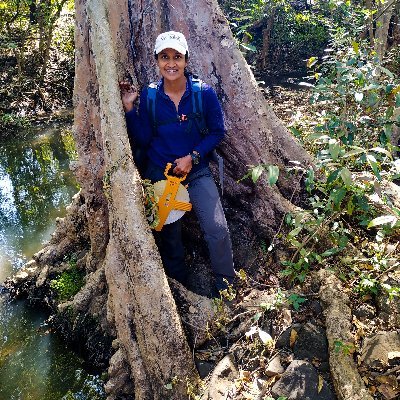
Project Dhvani
@project_dhvani
Followers
437
Following
852
Media
66
Statuses
540
Capturing the presence of vocalizing #biodiversity in India using creative remote sensing technology. #bioacoustics #conservation #ecology @E3BColumbia
India
Joined September 2020
Our team's first publication led by @Poojation coming out of central #India. Read about how #soundscapes differed across restored and unrestored tropical dry #forests. #restoration #conservation #bioacoustics CC: @WILDLABSNET @AudioMoth @RainforestCx @E3BColumbia
Been away for fieldwork since early 2023 building on work behind this OA @SERestoration paper with folks @ProjectDhvani @mayurikotian22 @Megs59801921 @4thewildtiger @vjjan91 @ruthdefries and others. We asked what #soundscapes can tell us abt #restoration.
2
2
6
A recent study from @project_dhvani -- a collaborative research group which uses sounds to study biodiversity -- has found how removal of invasive Lantana from forest patches can affect red-vented bulbul songs. ✍️ @NikaljeMohit Read here 👉 https://t.co/k5RPxDG0Az
1
2
9
This study marks a timely contribution to the growing body of literature on the efficacy of acoustic indices as tools to measure biodiversity, especially in tropical dry forests. Check out the full article!
0
1
4
Other factors, such as differences in the vegetation structure of the forest and species diversity, could affect how sounds travel in a habitat, thereby affecting how the indices capture these sounds.
1
0
4
One factor that could be driving our results is that these sites represent a complex socio-ecological system that is different from the protected forests in regions where these indices have worked before.
1
0
2
Overall, our results show limited capacity of indices to predict bird richness in the sites. Although the bioacoustic index shows more predictive potential in tropical dry forests in comparison to other indices, we recommend ample testing before using the index.
1
0
2
Collectively, the indices showed increase in efficiency (R² = 0.54) for predicting bird richness but this improvement was not comparable to previous studies examining a similar combination of indices (example: R² = 0.86).
1
0
2
4 out of the 7 indices, ACI, ADI, H and NDSI, showed weakest relationships with species richness (-0.07 <= R <= 0.00).
1
0
2
Our results revealed weak relationships for 6 out of 7 indices (-0.14 <= R <= 0.13). The bioacoustic index, which measures the intensity of and number of frequency bands occupied by bird sounds, individually outperformed the other indices, although limitedly.
1
0
2
We evaluated the relationship between seven indices and bird species richness in our study sites. First, a one-to-one regression analysis assessed each index individually. Then, we tested the ability of a combination of multiple indices to predict bird richness.
1
0
2
And so, we studied the efficacy of acoustic indices in an understudied biome in ecoacoustics - a Central Indian dry forest. These forests represent a complex socio-ecological system that sustains local communities and endangered species.
1
0
4
Although acoustic indices have shown potential to measure biodiversity, especially in the temperate region, inconsistencies have been observed across different biomes with only a few studies representing tropical dry forests.
1
0
3
In times when monitoring biodiversity responses to landscape changes is the need of the hour, acoustic indices may offer a solution by mathematically summarising soundscapes into single values based on how sounds occur in the soundscapes. See an example below.
1
0
3
Thrilled to share a new study by @mayurikotian22, @Sakhasiddha, Pravar Mourya, @z_burivalova and, @Poojation from Project Dhvani and @UWMadison on the efficacy of acoustic indices for measuring biodiversity published in @ConservationSP. Quick thread below! https://t.co/0oxDa7p7Um
1
13
36
And therefore, in the current UN Decade on Restoration, we call attention to moving beyond the generally adopted practice of estimating the presence or absence of species and investigating species-level responses, such as behavioural changes, to ecological restoration.
0
1
3
Observing post-restoration behavioural changes can provide insights on how species adapt and survive in restored habitats.
1
0
1
Passive acoustic monitoring offers a rapid method of monitoring changes in species behaviour, including vocalization, in response to changes in the habitat.
1
0
0
And so, our results suggest that ecological restoration through Lantana removal does not change RVBU vocalization over a short period, but RVBU could adapt to changes in understory over the long term.
1
0
0
However, our random forest classification model revealed that Lantana density was not an important variable for predicting the proportion of vocalizations across our sites.
1
0
1
We observed similar results for another type of RVBU vocalization, contact calls.
1
0
1
We found significant differences in the note lengths of songs with shorter notes in unrestored (Lantana-invaded) sites and longer notes in restored (Lantana-removed) sites, which we believe could be due to RVBUs adapting to the open understory.
1
0
2


